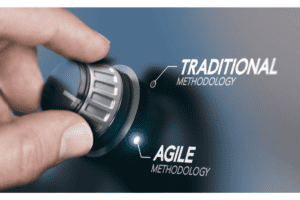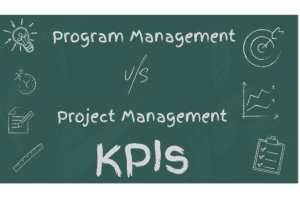Step-by-Step Guide to Deploying the Palo Alto Networks VM-Series Firewall in AWS
Setting up a firewall in AWS (Amazon Web Services) can feel like a big challenge. One interesting fact is that deploying a VM-Series Firewall significantly boosts your network’s security on AWS.
Our deployment guide walks you through every step of this process, making it easier than ever to secure your cloud environment. Ready to get started?.
Key Takeaways
- Setting up the VM – Series Firewall in AWS boosts network security by integrating with services like Gateway Load Balancer, AWS Cloud WAN, and VPC Endpoint associations. This setup ensures scalable and secure connectivity.
- Deploying this firewall involves selecting the right model from the AWS Marketplace, configuring settings through its interface, and setting up security policies for threat prevention. These steps help create a robust defense against cyber threats.
- The Palo Alto Firewall offers advanced features like network inspection, threat prevention, and dynamic address groups in AWS. It’s cost-effective due to auto-scaling capabilities that adjust resources based on demand.
- Challenges such as licensing issues, performance tuning, and troubleshooting can arise when deploying Palo Alto Firewalls in AWS. Overcoming these requires understanding traffic demands, adjusting settings accordingly, and utilizing detailed logs for pinpointing issues.
- Utilizing VM – Series with AWS Gateway Load Balancer enhances security by allowing traffic flow through firewalls before reaching applications. This integration supports scalability while maintaining strong defenses against threats across both IPv4 and IPv6 addresses.
Understanding the VM-Series Firewall

Shifting focus to the VM-Series firewall, let’s dive into what makes it a powerhouse in cloud security. The VM-Series is designed for the AWS environment, offering capabilities that extend beyond traditional firewalls.
It integrates smoothly with Gateway Load Balancer, ensuring not just enhanced security but also scalability across your network. This means you can grow your setup without worrying about increased risk.
The firewall supports secure connectivity through integration with AWS Cloud WAN and VPC Endpoint associations for protected communication within AWS. Overlay routing capability optimizes network traffic, making sure performance stays top-notch even under load.
Think of the VM-Series as not just a barrier against threats but as a bridge to efficient, scalable infrastructure in the cloud.
Steps to Deploy the VM-Series Firewall in AWS

Deploying the VM-Series Firewall on AWS can significantly boost your network’s security. It’s a step-by-step journey, ensuring every part of your cloud environment is shielded from threats.
Preparation for deployment
Before launching the VM-Series Firewall in your AWS environment, you need to tackle a few crucial steps. Start by setting up your AWS environment correctly. This includes selecting the right network and creating security groups that align with your organization’s policies.
Double-checking these configurations ensures a smooth integration with other native AWS services.
Gather all necessary information about VMware NSX-V, as this will play a significant role if integrating with other cloud platforms or environments beyond AWS. Planning is key—consider how multi-NSX Manager support might benefit your deployment strategy, especially for managing multiple instances or ensuring high availability across different zones.
This preparation phase is not just about ticking off items on a checklist; it’s about laying down the groundwork for a secure and robust firewall setup that can scale according to business needs while protecting against threats effectively.
Launching the VM-Series Firewall on AWS
First, select the right VM-Series model for your needs. You’ll find different options in the AWS Marketplace—each designed to match specific security and network demands. Look closely at each model’s features and throughput capacities.
This step is crucial for tailoring your firewall to handle the expected traffic flow smoothly.
Next, navigate through the AWS Marketplace to launch your chosen VM-Series Firewall. It involves a few clicks and filling out some basic information about your deployment preferences—a simple process made easier by AWS’s user-friendly interface.
Ensure you set up proper IP addressing and select an appropriate network mask that aligns with your organization’s infrastructure requirements. This stage sets the foundation for a secure and efficient network environment on AWS, paving the way for advanced threat prevention measures ahead.
Setting up the VM-Series Firewall on AWS
After launching the VM-Series Firewall on AWS, it’s time to get everything set up and running smoothly. Accessing the firewall interface is your first step. Here, you’ll enter your credentials and begin configuring basic settings.
This includes setting up a default route and securing your networks with security group rules tailored to your needs. These steps ensure that only authorized traffic flows through the firewall, keeping malicious threats at bay.
Next, adjust network configurations to fit your environment. Define security policies that align with best practices for network safety. Implement threat prevention mechanisms by activating features designed to block harmful malware and spyware from reaching your internal networks.
By taking these actions, you fortify your AWS environment against possible intrusions or attacks, making it a safer place for all of your applications and data to reside.
Quick Reference Guide: Deploying Palo Alto Firewall on AWS
-
Create Key Pairs
- Log in to AWS account.
- Navigate to Network Security -> Key Pairs.
- Create a new key pair, name it, and save it as a .ppk file using PuTTY Key Generator.
-
Prepare the VPC
- Delete default subnets in AWS VPC.
- Create four new subnets: Management, Inside, Outside, and DMZ, ensuring IP addresses are within the VPC range.
-
Select the Palo Alto Image
- Log in to AWS, go to Services -> EC2.
- Choose Amazon Marketplace, search for Palo Alto, and select VM-Series Next Generation Firewall Bundle 2.
-
Create an Instance
- Launch a new EC2 instance, selecting the Palo Alto image.
- Choose instance type M3 Extra Large.
- Configure instance details, selecting Management for the subnet and auto-assigning a Public IP.
- Add storage, selecting General Purpose SSD (GP2) volume type.
- Configure Security Group with unrestricted access and review settings before launching.
- Select the previously created key pair and launch the instance.
-
Configure the VPC
- Go to VPC dashboard, select Management subnet, and associate it with the Outside Routing table for Internet access.
-
Assign an IP Address to the Instance
- In EC2, select the instance and navigate to Network & Security -> Elastic IPs.
- Allocate a new address, associate it with the instance, and select an IP address to assign.
-
Test the Configuration
- Connect to the management interface using the AWS Public IP address through a PuTTY session or a web browser.
Features of Palo Alto Firewall in AWS

Palo Alto Firewall in AWS offers cutting-edge security that keeps your networks safe from threats—discover how it transforms cloud security for the better.
Network inspection and threat prevention
Network inspection and threat prevention are key to safeguarding your AWS environment. The VM-Series Firewall from Palo Alto Networks is designed to do just that. It scans all incoming and outgoing traffic for threats, blocks harmful activities, and prevents unauthorized access.
This firewall acts like a vigilant guard, checking every packet of data against known vulnerabilities and malicious code.
Setting up the VM-Series on AWS means you’re not only protecting your EC2 instances but also enhancing security with dynamic address groups. These tools work together to identify and stop attacks before they reach your network.
With features tailored for auto-scaling and integration with Amazon ELB services, the system adapts to traffic changes—ensuring robust security without compromise. Trust in this setup gives peace of mind; knowing your cloud infrastructure stays secure against ever-evolving cyber threats.
Security controls augmentation
You can beef up your AWS environment with dynamic address groups and security policy extensions. These tools help you stay ahead by automatically adjusting policies as network traffic changes.
Think of them as smart guards that adapt in real-time, keeping unwanted visitors out without you having to lift a finger.
Integrating the VM-Series Firewall with load balancers and WAN services ramps up your defense game even more. It’s like adding an extra layer of armor around your cloud fortress, making sure every bit of data passing through gets scrutinized for threats.
This setup not only tightens security but also keeps things running smoothly, ensuring your AWS environment is both safe and efficient.
Cost-effectiveness and scale
Deploying the VM-Series Firewall on AWS offers a smart way to manage your budget while growing your security infrastructure. The use of cloud monitoring services and dynamic scaling with auto-scaling templates make it an efficient choice for businesses of all sizes.
These tools automatically adjust resources based on demand, ensuring you only pay for what you need. This approach maximizes your investment, making every dollar count towards securing your network.
Scaling up doesn’t have to mean ramping up costs. With the VM-Series Firewall, leveraging features like encryption of EBS volumes and using dynamic address groups helps in securing instances within VPCs without a hefty price tag.
As traffic grows, the solution scales seamlessly—thanks to high availability and load balancing techniques—without compromising performance or breaking the bank. This blend of flexibility and cost control makes it an appealing option for junior network engineers looking to optimize their organization’s cloud security posture efficiently.
Implementing Next-Generation Threat Prevention with AWS Gateway Load Balancer and VM-Series Firewalls

Leveraging AWS Gateway Load Balancer with VM-Series Firewalls transforms your network’s security. It steps up the game in blocking threats before they reach your applications, ensuring peace of mind and ultra-secure operations.
Set-up process
Setting up the VM-Series firewall on AWS is a crucial step towards safeguarding your network. First, ensure you have prepared your AWS environment correctly. It involves configuring service definitions and creating template stacks along with device groups in Panorama.
This preparation enables a smooth integration process. Then, focus on enabling VM-Series integration with the AWS Gateway Load Balancer. This step is essential for setting up auto-scaling groups and ensuring high availability for your VM-Series firewall.
Integrating CloudWatch monitoring comes next, enhancing visibility across your network’s activities. Activate Auto Scaling with Amazon ELB to manage traffic efficiently and ensure your setup scales as needed without manual intervention.
Connect the VM-Series firewall seamlessly with AWS Cloud WAN and Outposts to extend its capabilities further into the cloud infrastructure, making sure you’re fully leveraging the cloud-native services provided by AWS to bolster security measures and streamline operations across platforms.
Challenges of Deploying Palo Alto Firewall in AWS and overcoming them
Deploying Palo Alto Firewall in AWS can be tough. You might face issues with licensing, performance tuning, and troubleshooting. It’s normal to hit bumps along the way. The good news is, you’re not alone.
Many have navigated these waters before and found solutions. For licensing, make sure you understand the options – BYOL or pay-as-you-go are both viable but have different impacts on cost and flexibility.
For performance tuning, start by identifying your traffic patterns and demands. Then adjust your VM-Series firewall settings to meet these needs without overspending resources. Troubleshooting can get tricky, especially when dealing with complex network configurations or integrating with AWS services like CloudWatch for monitoring.
But remember, detailed logs are your best friend here—they’ll guide you to pinpoint issues quickly. With persistence and the right approach, these challenges become stepping stones rather than roadblocks.
Integrating VM-Series Firewalls with AWS Infrastructure
You can integrate VM-Series with Gateway Load Balancer in AWS by setting up the load balancer as a target. This process allows traffic to flow through your firewall for enhanced security.
For deploying VM-Series Firewalls as GlobalProtect Gateways, ensure your AWS environment is properly configured. Remember, securing your network involves understanding these configurations and applying them correctly.
Associating a VPC Endpoint with a VM-Series Interface boosts direct connectivity within your private cloud—no need for public IP addresses or Internet gateways. If you wonder about auto-scaling with Amazon ELB Service, yes, VM-Series Firewalls can adapt to traffic changes.
These practices keep your network flexible and secure against threats across both IPv4 and IPv6 addresses. Next, we’ll delve into troubleshooting common deployment challenges to keep everything running smoothly.
FAQs
1. What do I need before deploying a VM-Series Firewall in AWS?
Before you dive into the deployment, ensure you’ve got all prerequisites covered. This means setting up your AWS environment, understanding the shared responsibility model of public clouds like Amazon AWS, and having a BYOL (Bring Your Own License) for your VM-Series firewall. Don’t forget to check if your network is ready with proper subnets and IP addresses.
2. How do I choose the right VM-Series Model for my needs?
The key here is to analyze your network’s demands—think about traffic volume, security requirements, and whether you’ll need advanced features like TLS 1.3 decryption or IPsec tunneling. Then, navigate through the AWS Marketplace; it’s stocked with options tailored for various scales of operation from small businesses to large enterprises.
3. Can you guide me through the initial setup of my VM-Series on AWS?
Absolutely! Start by accessing the VM-Series Firewall interface—this will be your command center. From there, embark on a basic setup journey: configure network settings including interfaces and default gateway, then dive into security policies creation… Remember to encrypt sensitive data and manage access carefully!
4. What are some best practices for configuring security policies on my firewall?
First things first—define clear rules that align with your business goals while blocking malicious websites and phishing attempts dead in their tracks! Implement threat prevention mechanisms diligently; leverage machine learning if possible for an edge in detection accuracy… And always keep those TLS certificates up-to-date!
5. How can I integrate my firewall seamlessly with other AWS services?
Integration can supercharge your firewall’s capabilities! Connect it to native services like CloudWatch for real-time monitoring bliss—it’s like having eyes everywhere… Also consider leveraging serverless architectures or databases within AWS; they play well together ensuring smooth sailing across your digital landscape.
6. Facing challenges? Here’s how to troubleshoot common issues…
Don’t fret when bumps appear on the road—start by checking logs through portals or command line interfaces; these often hold clues… Ensure networking configurations such as subnets or private IP addresses are correctly set up… And remember—the community forums and GitHub repositories are treasure troves of wisdom shared by fellow DevOps warriors just like yourself!
7. Why do I need to set up a Palo Alto Support account after configuring my firewall on AWS, and how do I do it?
Setting up a Palo Alto Support account after deploying your firewall on AWS is crucial for accessing software updates, managing licenses, and receiving technical support. It is easy, just select the option to create a new account at support.paloaltonetworks.com.
Conclusion
Diving into the world of AWS firewalls can seem daunting at first. Yet, with the right guide, it becomes an achievable task even for junior network engineers. This step-by-step manual lays out everything needed – from setup to scaling your VM-Series Firewall.
Imagine securing your network effectively, optimizing costs, and enhancing performance across the board. That’s what deploying a firewall in AWS promises. Let this journey transform not just your network’s security posture but also your confidence in navigating cloud environments.
If you liked this article, remember to subscribe to MiamiCloud.com. Connect. Learn. Innovate.







